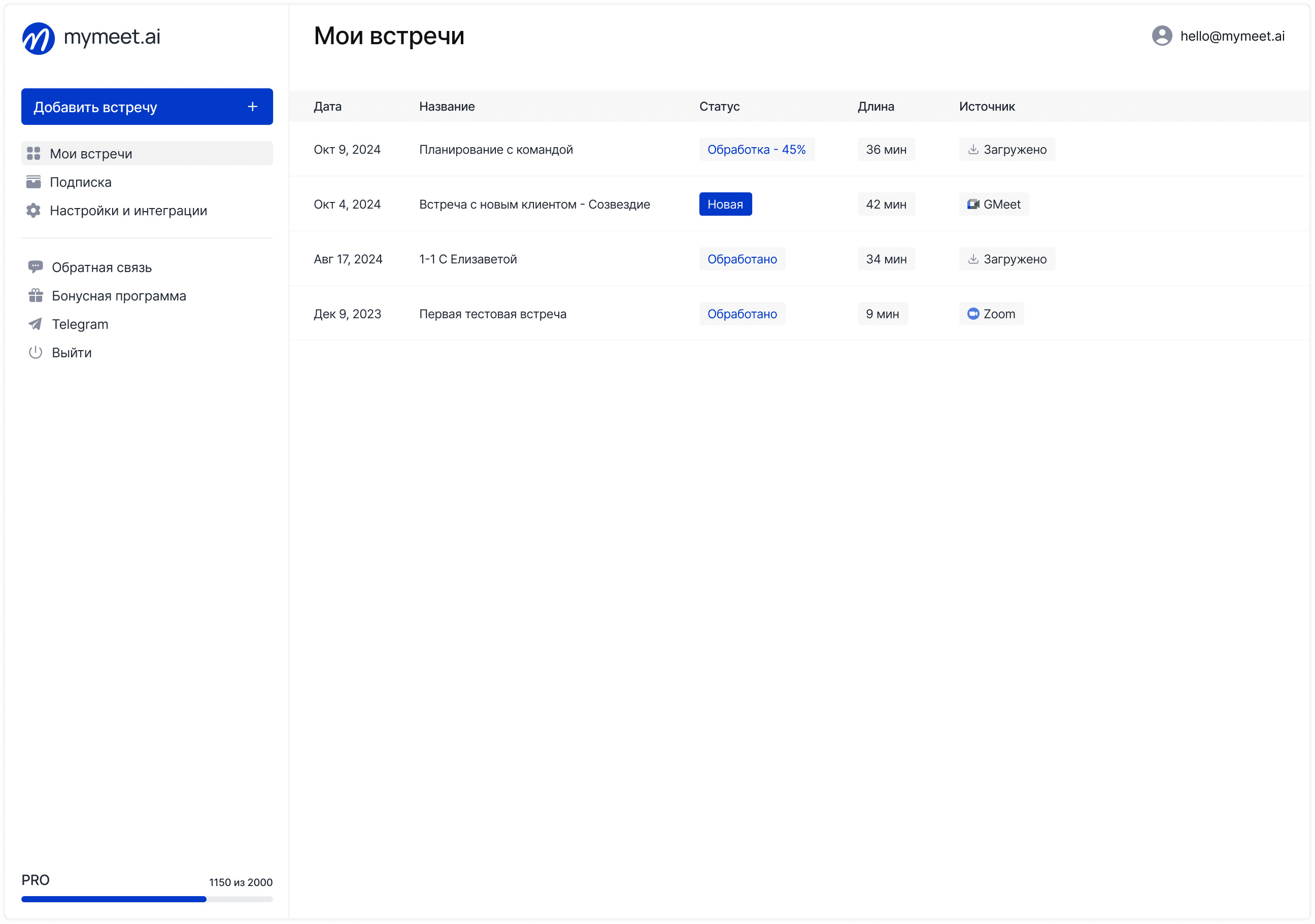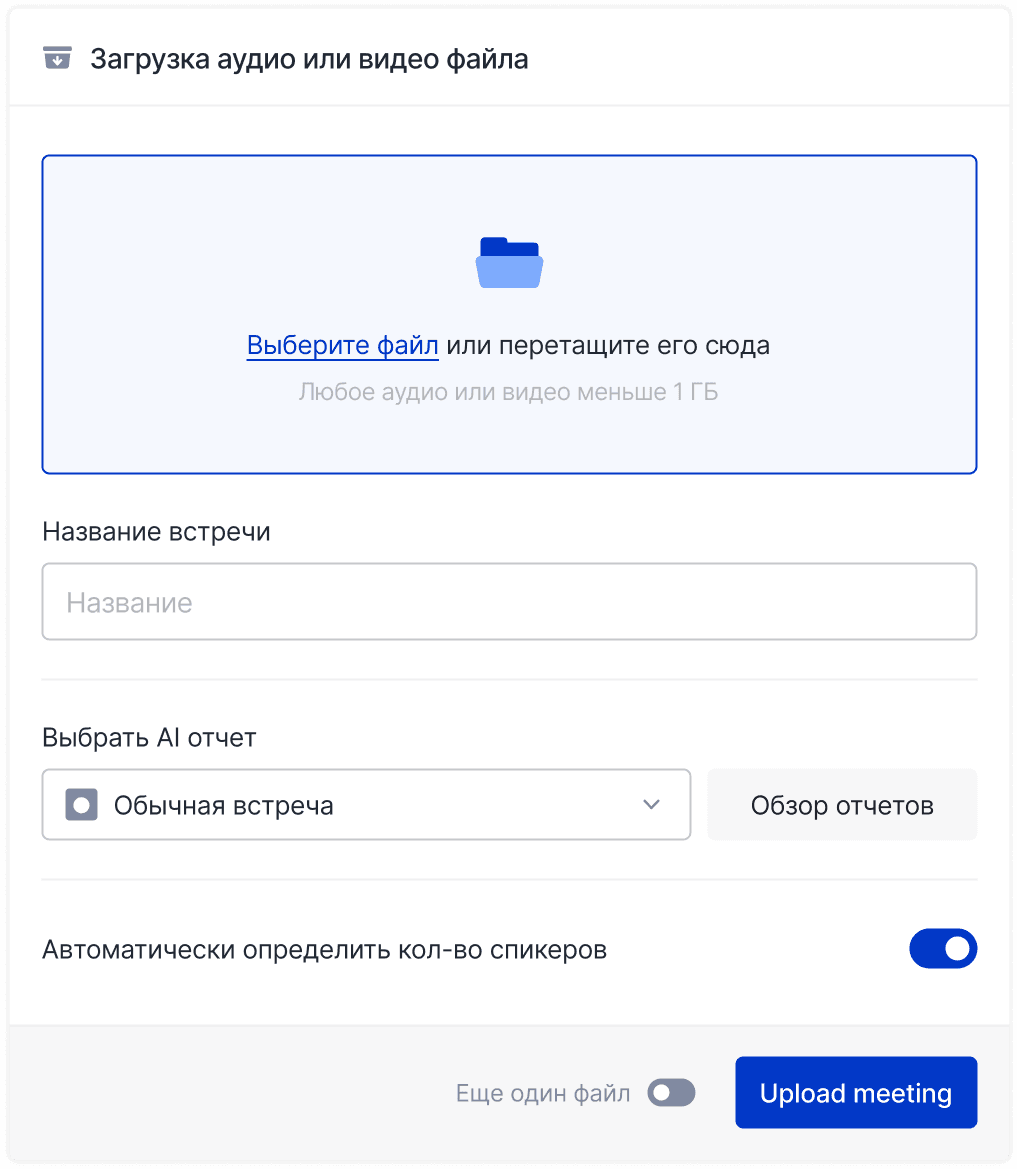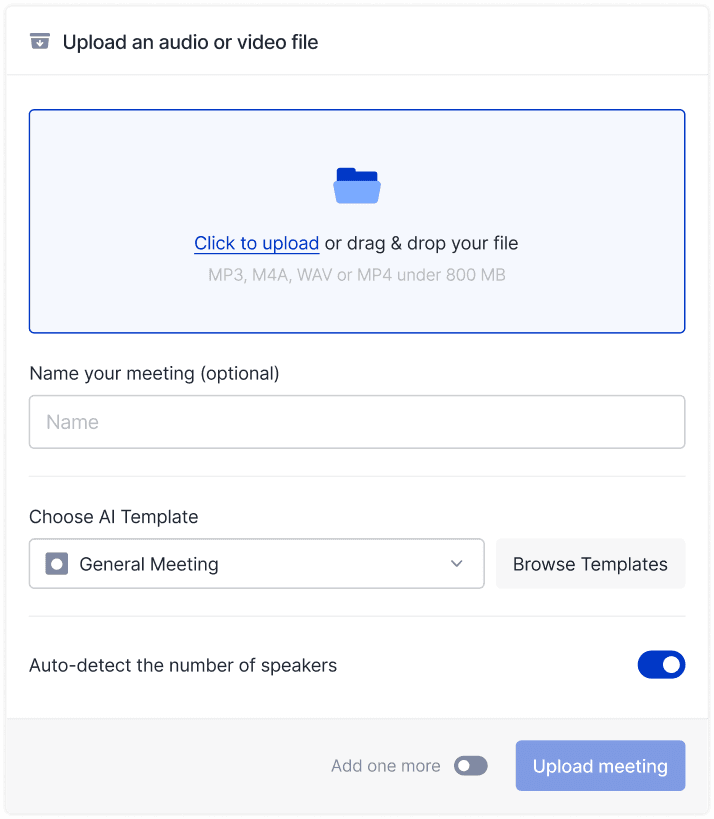Meeting Tips

Andrey Shcherbina
May 19, 2025
Group decision making should yield more balanced results than individual decisions. But reality often proves otherwise — teams make systematic errors due to cognitive biases that are amplified in group dynamics. In this article, we'll examine the most common cognitive traps in collaborative work and share practical methods to overcome them.
What Are Cognitive Biases and Why Are They Dangerous for Groups?
Cognitive biases are systematic thinking errors that affect people's judgments and decisions. In a group context, these biases can manifest individually while simultaneously being amplified through social mechanisms, creating serious barriers to quality decision making.
When a group gathers to make decisions, each participant brings their knowledge, experience, and personal prejudices. Without proper attention to these biases, teams risk:
Making decisions based on incomplete or distorted data
Missing important aspects of the problem
Wasting resources on ineffective or risky initiatives
Reducing innovation potential and competitiveness
Major Cognitive Biases in Group Decisions
Various types of cognitive biases are particularly prominent in group work. Understanding these patterns helps teams take preemptive measures to neutralize them.
Groupthink

Groupthink is a phenomenon where the desire to reach consensus outweighs the effort to critically evaluate alternatives. This effect is especially common in cohesive teams where harmony and agreement between participants are highly valued.
Groupthink manifests through characteristic signs that can be noticed with careful observation of the discussion process:
Illusion of invulnerability and excessive optimism
Collective rationalization of contradictory data
Simplified representation of competitors or opponents
Direct pressure on participants expressing disagreement
Self-censorship by group members for fear of disrupting consensus
Confirmation Bias

During group work, teams tend to seek information that confirms their current position and ignore contradictory data. This effect is particularly noticeable when the group has already formed a preliminary opinion or attitude on the issue being discussed.
Confirmation bias operates on several levels: participants selectively gather data, interpret neutral information in favor of their position, and pay less attention to alternative viewpoints. The result is an illusion of objectivity, although the decision is based on a distorted picture of reality.
Information Cascade

This effect occurs when the first opinions expressed in a group disproportionately influence the final decision. Participants adjust to initially available information, even if they have grounds for a different point of view.
The information cascade forms gradually. Participants who speak first set the direction of the discussion. Subsequent speakers, even with opposing opinions, often begin to doubt their position and conform to the majority opinion. As a result, the group may move in the wrong direction, despite the fact that participants, taken individually, might have come to a different conclusion.
Group Polarization Effect

Research shows that group discussion often intensifies participants' initial tendencies. During discussion, moderate views become more extreme, which can lead to disproportionately risky or, conversely, overly conservative decisions.
Polarization occurs for several reasons. Participants strive to present themselves in a favorable light by putting forward more decisive arguments. Additionally, during discussion, a person encounters new arguments supporting their initial position, which strengthens their confidence. The result is an intensification of the group's original tendencies.
Illusion of Group Effectiveness

Many teams overestimate their ability to make quality decisions. Participants believe that the mere fact of group discussion guarantees a better result, ignoring the need to structure the process.
This illusion leads teams to neglect special methodologies and tools for improving the quality of group decisions. Group members may mistakenly believe that the natural dynamics of discussion are sufficient to identify all important aspects of the problem and make the optimal decision.
Digital Tools for Reducing Cognitive Biases: Experience Using mymeet.ai
Online meetings are particularly susceptible to cognitive biases due to limited nonverbal contact and difficulties with discussion coordination. The mymeet.ai platform offers tools specifically designed to minimize these biases and improve the quality of group decisions.
A key feature of mymeet.ai is creating an objective record of the meeting using AI transcription. An accurate transcript allows participants to return to what was actually said, rather than relying on selective memory, which often amplifies cognitive biases. The system automatically identifies speakers and structures the dialogue, making meeting results more transparent.

Mymeet.ai's AI reports highlight key discussion points regardless of who presented them or how, reducing the influence of status effect and confirmation bias. This is especially important for overcoming groupthink, as it allows consideration of all significant viewpoints, even if they were expressed less confidently or by less authoritative participants.
The AI chat function allows follow-up questions about discussion content after the meeting, helping to identify previously unnoticed aspects and contradictions. This is an effective tool for counteracting the information cascade effect, as it allows critical review of meeting conclusions considering all available information.

The main advantages of using digital tools to combat cognitive biases include:
Objective recording of all expressed opinions without distortions or omissions

Equal access to information for all participants in the decision-making process
Structured presentation of discussion results

Ability to analyze the decision-making process retrospectively
Reduced influence of status and authority on perception of ideas
Support for asynchronous work with meeting materials after completion
Identification of unconsidered aspects of the problem through analytical tools
These technological solutions help teams overcome the natural limitations of human thinking and create a more objective basis for decision making. As artificial intelligence develops, the capabilities of such systems will expand, providing even more effective tools for combating cognitive biases in group work.
Methods for Overcoming Cognitive Biases in Group Work
There are many proven approaches to minimizing the influence of cognitive biases. These methods can be applied to both offline and online meetings.
Active Promotion of Diverse Opinions

Diversity of viewpoints is critically important for overcoming group biases. There are proven techniques that help ensure the collision of different perspectives during discussion.
One effective approach is appointing a "devil's advocate" — a participant whose official role is to critically analyze and present counterarguments. This technique helps the group examine the problem from different angles and identify potential weaknesses in the main approach.
Additionally, it's useful to involve external experts who are not involved in group dynamics and can provide an independent assessment of the issues being discussed.
Structured Decision-Making Methods
Formalized decision-making methods significantly reduce the risk of cognitive biases. They ensure more even participation of all group members and reduce the influence of status on the decision-making process.
Among the most effective methodologies are:
Delphi method: participants independently submit their suggestions, which are then anonymously processed and returned to the group for further discussion
Nominal group technique: combines individual work with group discussion, preserving the advantages of both approaches
Preliminary surveys: collecting opinions before the meeting reduces the influence of information cascade and gives the opportunity to consider everyone's opinion
Separating the Process of Generating Ideas and Evaluating Them

Clear differentiation of work stages with ideas helps overcome many cognitive biases. With a properly organized process, the group can generate diverse solutions and objectively evaluate them.
When conducting brainstorming, it's important to strictly separate the stages of generating and evaluating ideas. In the first stage, diversity and quantity of ideas should be encouraged without criticism. Only after completing the generation stage should you move to structured evaluation of proposals.
This approach helps overcome conformity pressure and avoid premature convergence on the first acceptable solutions.
Culture of Mindfulness and Learning

Developing an understanding of cognitive biases among team members significantly improves the quality of group decisions. Informed participants better recognize signs of biases and can adjust the discussion process.
Regular training and analysis of specific cases help participants become aware of their prejudices and their impact on group work. It's also useful to conduct retrospective analysis of decisions made, identifying cases where cognitive biases influenced the process.
Preliminary Morphological Analysis Technique

Morphological analysis offers a structured approach to considering all aspects of a problem. This technique helps expand the group's field of vision and identify non-standard solutions.
Before starting the discussion, it's useful to break down the problem into components and ask each participant to independently analyze all aspects. This approach prevents tunnel vision and template solutions, ensuring comprehensive consideration of the situation.
Comparison of Traditional and Structured Approaches to Group Decisions
The choice of approach to organizing group discussions significantly affects the team's susceptibility to cognitive biases. Traditional and structured approaches have significant differences in efficiency and effectiveness.
The following table demonstrates key differences between these approaches and shows why structured methodologies help minimize the influence of cognitive biases.
Aspect | Traditional Approach | Structured Approach |
Process | Free discussion | Clear stages with separation of generation and evaluation |
Participant roles | Undefined | Clearly distributed, including opponent role |
Information gathering | Predominantly verbal | Combination of written and oral formats |
Opinion evaluation | Often subjective | Use of objective criteria |
Status influence | High | Reduced through anonymous techniques |
Decision-making time | Often prolonged | Usually more efficient |
Practical Advice for Leaders and Group Participants
Improving the group decision-making process requires participation from all team members. Both leaders and regular participants can contribute to minimizing cognitive biases.
For Facilitators and Leaders
Group leaders and facilitators play a key role in minimizing the influence of cognitive biases. They can create conditions conducive to more objective and balanced decisions.
Here are several practical recommendations for those who lead group discussions:
Structure meetings for maximum participation from each team member
Collect opinions in written form before starting the discussion
Encourage constructive disagreement and diversity of viewpoints
Be attentive to group dynamics and signals of conformity
Periodically evaluate the decision-making process in the team
For Group Discussion Participants
Discussion participants can also make a significant contribution to improving the quality of group decisions. A mindful approach to participating in discussions helps overcome cognitive biases at the personal level.
Recommendations for group discussion participants:
Prepare for meetings by formulating your own position
Ask questions and express doubts, even if others seem confident
Be open to changing your opinion when new data appears
Pay attention to trends in group dynamics
Develop critical thinking and study typical cognitive biases
Conclusion
Cognitive biases are inevitably present in the group decision-making process, but their influence can be significantly reduced. Awareness, structured methodologies, and a culture of constructive disagreement allow teams to use the advantages of collective intelligence while avoiding typical traps of group thinking.
Combating cognitive biases is a continuous process of team development. Regular implementation of practices that reduce the influence of prejudices gradually forms a more objective and effective decision-making culture. Organizations that invest time in improving this process gain a significant competitive advantage through improving the quality of strategic and tactical decisions.
Implementing even a few of the methods proposed in the article can noticeably improve the results of group work. The key is consistency and systematicity in applying practices aimed at overcoming cognitive biases.
Frequently Asked Questions
Can cognitive biases have a positive effect in group decisions?
In some cases, cognitive biases, such as optimistic bias, can increase team motivation and help overcome difficulties. However, for quality decision making, it's important to minimize the influence of biases, especially at the information analysis stage.
How can you tell if a group is subject to cognitive biases?
The main signs are: lack of critical discussion, quick consensus, ignoring contradictory information, pressure on dissenters, and a general unwillingness to consider alternatives. Regular reflection on the decision-making process helps identify these signs.
What role does diversity in a group play in overcoming cognitive biases?
Diversity of experience, education, cultural background, and thinking of participants significantly reduces the risk of group biases. Different perspectives help examine the problem from various angles and counter the tendency toward homogeneous thinking.
How often should the composition of working groups be changed?
Periodic renewal of working group composition helps avoid the formation of stable groupthink patterns. The optimal rotation frequency depends on the nature of tasks, but including new participants every 3-6 months usually positively affects the quality of decisions.
Does group size influence susceptibility to cognitive biases?
Research shows that the optimal group size for decision making is 5 to 9 people. Smaller groups have limited diversity of viewpoints, while larger groups intensify the effects of conformity and social loafing.
Andrey Shcherbina
May 19, 2025








